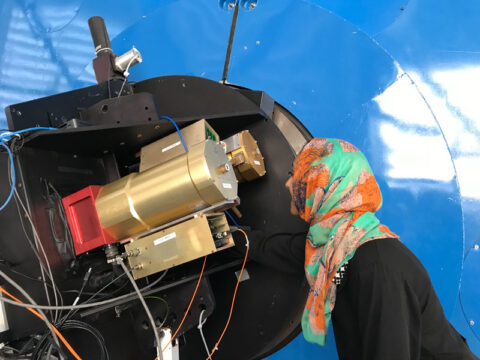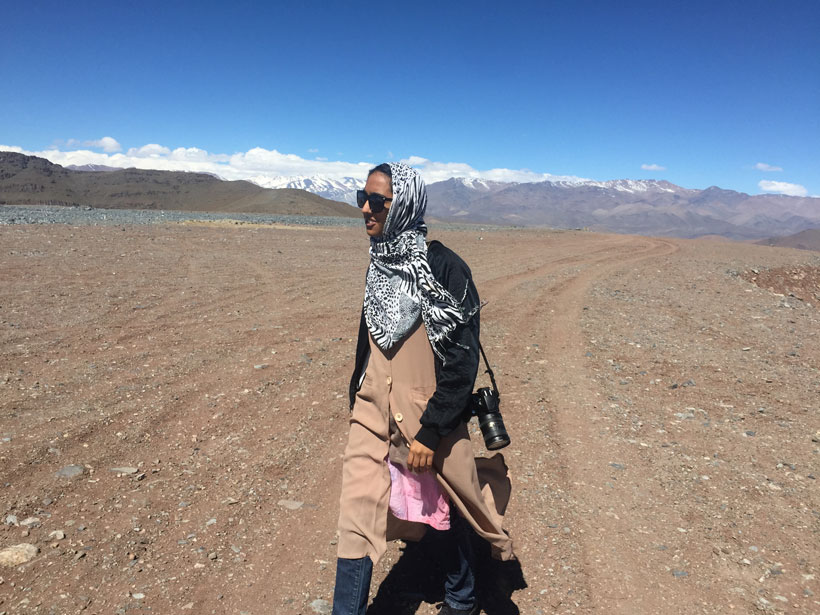For Munazza Alam, pondering the stars is part of being human. “Everyone, at some point, has looked up at the sky and contemplated the cosmos,” she said.
Yet as a New Yorker, Alam grew up without truly seeing the stars, because of light pollution. It took a couple of pivotal mentors and a trip to Arizona to bend her trajectory toward the Ph.D. in astronomy that she recently earned from Harvard University.
“I was always a curious child,” Alam said. In high school, she channeled this curiosity into physics class, where she was captivated by the way her teacher, Betty Jensen, unveiled the inner workings of the universe. Jensen was also the first woman Alam met who’d earned a Ph.D. in physics. Because of her, Alam started wondering whether academics could be her path too.
Alam wanted to stay in New York City after high school, so she joined the Macaulay Honors College at Hunter College, City University of New York. This selective program covers its students’ tuition, which allowed Alam to attend college without going into debt.
Alam knew she wanted to major in physics, but her scheduling adviser told her she needed to choose a specific research direction. Try astronomy, her adviser suggested.

At age 19, a year into her career as an astronomy researcher, Alam traveled to Kitt Peak National Observatory in Arizona. For the first time in her life, the Milky Way stretched before her, without interference from streetlights and apartment buildings. Alam was starstruck. “It’s just etched in my brain,” she said. The trip solidified her decision to become an astronomer.
Alam chose Harvard University for her graduate work because she found the astronomy department exciting and innovative. Her work focused on exoplanets, and she hopes it will one day reveal whether life exists outside our solar system.
Although Alam loved her work, she initially found graduate school exhausting. One of the most valuable lessons she learned is that it’s OK to take breaks.
As Alam begins a postdoctoral position at the Carnegie Science Earth and Planets Laboratory, she says she’s most proud of the network of mentors she’s built. She described her Ph.D. thesis adviser, Mercedes López-Morales, as “an absolute phenom,” and she’s also formed lasting connections with other faculty, staff, and students. To round out the crew, Alam still keeps in touch with her high school physics teacher, who attended Alam’s Ph.D. defense this past spring.
Alam welcomes messages through her website.
This profile is part of a special series in our September 2021 issue on science careers.
—Saima Sidik
Citation:
Sidik, S. (2021), Munazza Alam: Searching for new worlds, Eos, 102, https://doi.org/10.1029/2021EO162263. Published on 24 August 2021.
Text © 2021. The authors. CC BY-NC-ND 3.0
Except where otherwise noted, images are subject to copyright. Any reuse without express permission from the copyright owner is prohibited.


